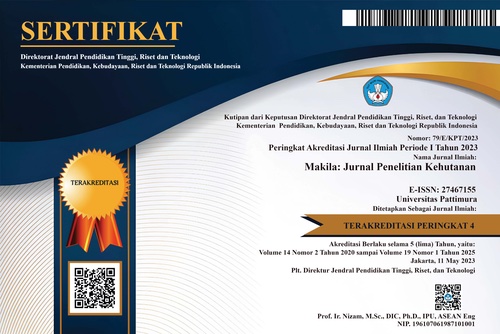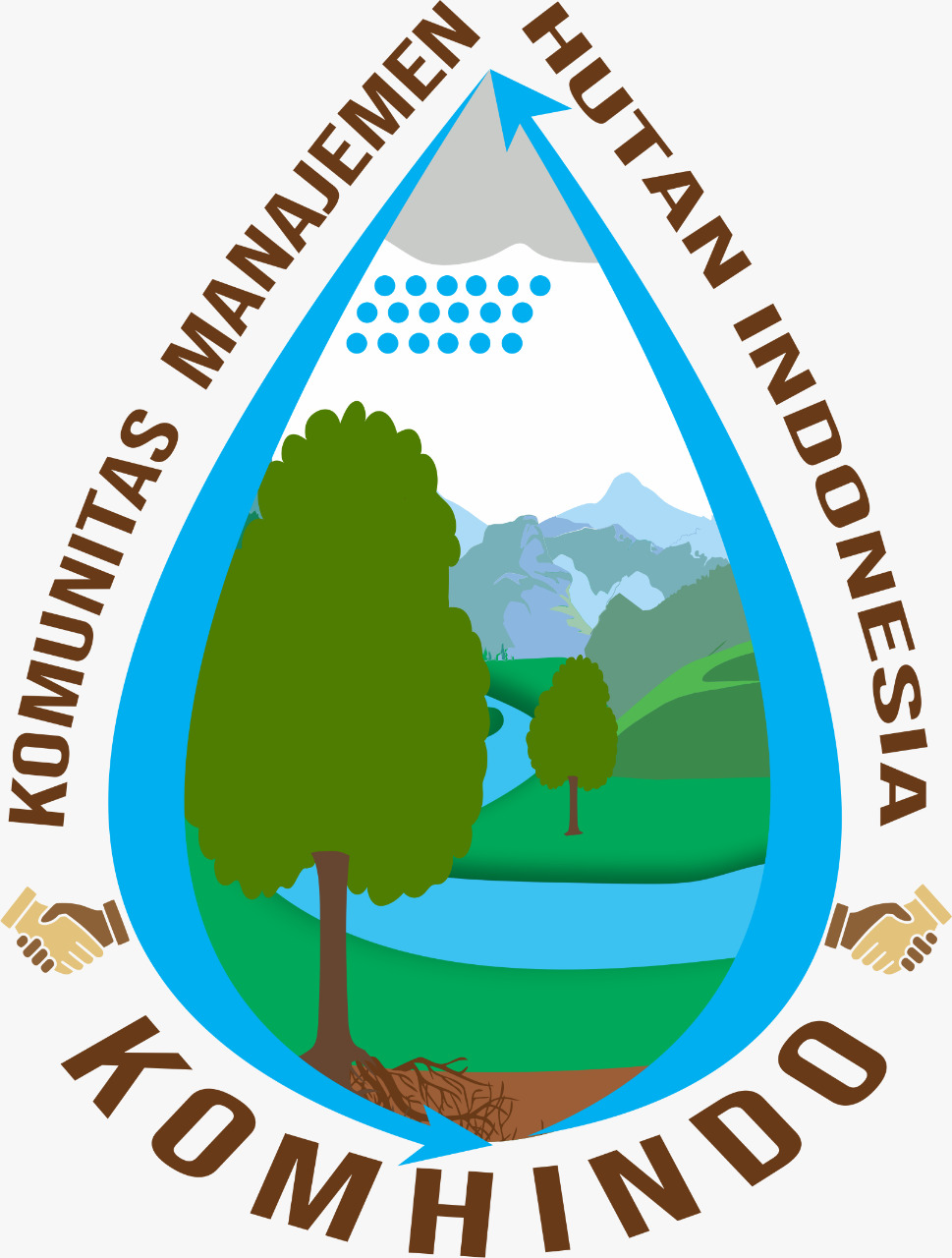Arahan Zonasi Penggunaan Lahan Berbasis Evaluasi Kemampuan Lahan dan Analisis LCLP di Kelurahan Tafamutu, Kecamatan Moti, Kota Ternate
Abstract
This study evaluates land capability in Tafamutu Village, Moti District, Ternate City, as a basis for sustainable land-use planning. Employing the Land Capability Classification (LCC) framework and the Land Classification and Land Use Planning (LCLP) software, the analysis identifies five land capability classes (V–VIII) across sixteen land mapping units. Subclass V‑P1, occupying 7.6 ha (1.1%), is constrained by slow permeability (< 25 mm/h). In contrast, subclass V‑b3, covering 100.4 ha (14.9%), is characterized by high coarse fragment content (> 90%), resulting in splash erosion rates of up to 22.3% under intense rainfall. Class VI‑E, comprising 135.3 ha (20.1%), is defined by moderate slopes (30%–45%) and elevated surface runoff potential—up to 75% higher compared to gentle slopes (< 15%). Class VII‑e5 encompasses 143.9 ha (21.4%) and is marked by severe erosion, with rates reaching 1,738.2 t ha⁻¹ yr⁻¹. Class VIII‑G, the most significant area at 261.2 ha (38.9%), includes very steep slopes (> 65%) and is designated strictly for conservation purposes. The dominant soil textures are clay loam and sandy loam, with an average adequate depth of 80 cm and a pH range of 5.0–6.5. These edaphic conditions support the cultivation of cloves and nutmeg, contingent upon implementing appropriate soil conservation techniques such as terracing and organic mulching. Based on the land capability assessment, recommended land uses include grazing on Class V lands (108 ha; 16.5%), limited plantation development on Class VI (135.3 ha; 20.1%), production forestry on Class VII (143.9 ha; 21.4%), and strict protection as forest reserves on Class VIII (261.2 ha; 38.9%). These zoning guidelines are instrumental in promoting climate-resilient land management and the sustainable utilization of natural resources within coastal volcanic landscapes.
Downloads
Copyright (c) 2025 Gunawan Hartono, Tri Mulya Hartati, Sarif Robo, Kurnia Sari Kasman

This work is licensed under a Creative Commons Attribution 4.0 International License.











